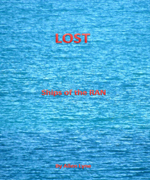
 Lost: The stories of all ships lost by the Royal Australian Navy
Lost: The stories of all ships lost by the Royal Australian Navy
by Allen Lyne, Moana Heights SA, Self-published, 2013. ISBN: 9780646903750.
RRP $32 + $3 postage within Australia
Reviewed by Ian Pfennigwerth
WHO KNEW that the RAN had lost 45 ships in its hundred years of existence? Probably nobody, until Allen Lyne spent five years researching the issue. His book describes the background, circumstances and the events leading to these losses, some of them well known, others far from so. Those not overly familiar with the history and circumstances in which the RAN has operated and fought will be grateful for the author’s thorough explanations. Lyne has also used his researcher’s prerogative to pass judgment on who or what was to blame for the losses.
A summary of Lyne’s research reveals that ten of the vessels, mostly those of the Naval Auxiliary Patrol (NAP) in WWII, were lost to fire, six to groundings or strandings, five to collisions and four to unknown causes. Two were lost in storms, one hit an Australian-laid mine and sank, and one was sunk when the wharf it was secured to collapsed on it! The remaining 16 were lost though enemy action, a terrible toll but, possibly, a source of pride in Australia’s navy as a fighting service – and preferable to running ships aground or having them collide.
Lyne has clearly spent his research time wisely and well. His analysis of the collision in Port Phillip that sank the minesweeper Goorangai with all hands in 1940 demonstrates that it was probably the liner Duntroon that caused the accident, but that a smart lawyer can work wonders to obscure the facts. Of course, there are no blameless parties in any collision, but this one seems to have been especially hard on the victim. He covers the loss of Sydney to SMS Kormoran, and introduces some interesting observations on a similar incident – fortunately ‘blue-on-blue’- involving the cruiser HMS Neptune. A lack of sensible precautions while approaching a suspicious merchant ship is the common factor in both incidents.
For reasons not entirely clear (petrol in the bilges?), the NAP vessels were particularly prone to fire. The Japanese aerial attacks on Darwin accounted for five of the small craft lost to enemy action, precious vessels at a time when anything that could float and move was a valuable item. The stores tender Matafele probably foundered because the alterations made to her structure had not been properly assessed for the effects they might have on her stability: her wreck remains unlocated.
Lyne is understanding of the perils which faced Lieutenant Commander Robison at Betano in September 1942 and which led to the stranding of Voyager and her complete loss – there were certainly extenuating circumstances. He is less kind to Commodore Pope who launched Operation HAMBURGER, exposing two corvettes and the patrol vessel Kuru on a similar mission to Timor in December the same year to serious Japanese reprisals, and ordering it to continue when it was clearly fatally compromised. Perhaps it was the “fog of war” which clouded his judgement, but it cost the lives of 100 men and the RAN the corvette Armidale.
A board of inquiry into the loss of HMAS Canberra at Savo Island in August 1942 was unable to determine the reason she was lost so easily and the attempt by Bruce Loxton to sheet the blame home to a US destroyer’s torpedo was not totally satisfactory. Lyne comes up with no new evidence. There are no such mysteries about the loss of Vampire in April 1942, overwhelmed by Japanese bombs. ML-430 was the victim of an attack by fellow ML, very obviously a’ fog of war ’incident, which fortunately cost no lives.
Of the peacetime losses, Lyne correctly observes that Voyager should have kept out of the path of Melbourne on 10 February 1964 and that why she did not will forever remain a mystery, whatever Royal Commissions might say. In the sinking of the stores ship Woomera in 1960 with the loss of four lives, human cupidity seems to be involved although if there was a board of inquiry – as there should have been – Lyne does not cite from it. Were the ship and these men lost because of the desire to salvage parachute silk from flares?
There are points in the book over which one might quibble. It is not appropriate to criticise the RAN for having no aircraft carriers in 1939: only three navies did, and the RAN had staged a remarkable comeback from almost disappearing during the Great Depression. Similarly, I’ve yet to see any evidence that a shortage of experienced senior NCOs affected the performance of the RAN in World War II. On the contrary, there is much to show that the RAN, while expanding from a force of 7,500 to close to 40,000, performed pretty well, especially as most of the new recruits were “hostilities only” personnel.
But these are quibbles only. Lyne’s book is an interesting and thought-provoking addition to our naval history, one which throws light on the debit side of the ledger. I thoroughly recommend it to a general audience and to experts alike.



